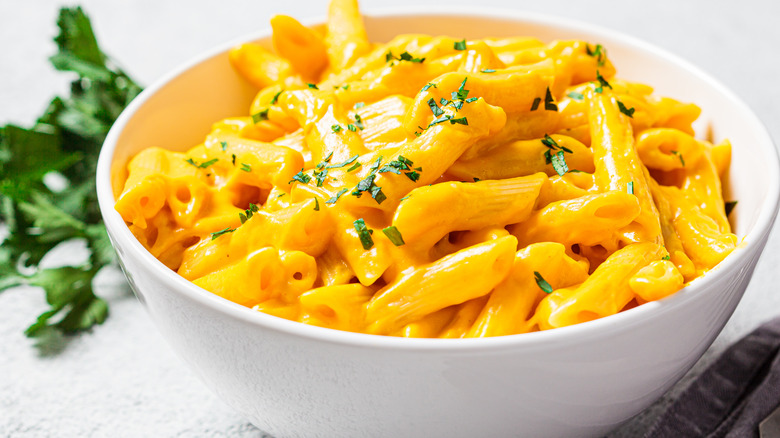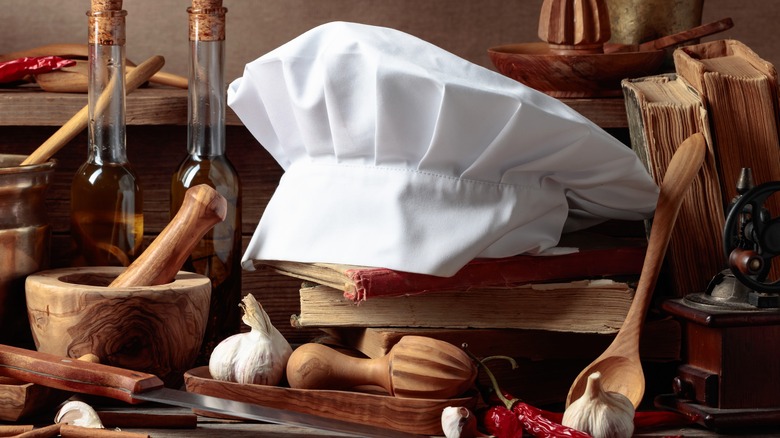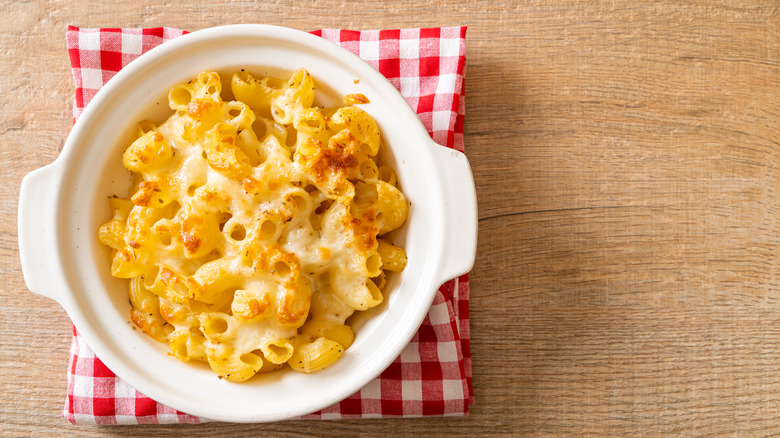Why James Hemings Should Get Credit For The Invention Of Mac And Cheese
When it comes to American history, school textbooks don't always include every fact about important events and figures. Some offer half-truths, while others offer blatant lies. If you're a food history buff, you might already know that a certain political figure who appears in many of those same textbooks is credited for introducing a popular dish to the United States.
That figure is Thomas Jefferson, the third U.S. president and one of the authors of the Declaration of Independence. He's also the face on the (discontinued) two-dollar bill and (current) five-cent nickel in U.S. currency. Some sources also credit him for bringing macaroni and cheese from Europe to North America. But just like those textbooks, this serves as an example of one of those half-truths.
While Jefferson played a major role in the origins of the American macaroni and cheese dish that many of us enjoy today, there's another man worthy of praise for his role. His name is James Hemings, and after learning about his contributions, some argue that he deserves most of the praise.
Who was James Hemings?
Born into slavery in 1765, James Hemings began serving at Thomas Jefferson's Monticello plantation in Virginia when he was just 9 years old, according to The Jefferson Monticello website. Jefferson didn't become president until 1801, but as a delegate to the Second Continental Congress, per History, he was still wealthy enough to inherit enslaved people in the late 1700s. James Hemings, his mother, and his siblings were among them.
In 1784, Jefferson began serving as a U.S. minister to France and requested that Hemings join him there to learn the "art of cookery," as explained in The Jefferson Monticello. More specifically, the art of French cuisine. Hemings was just shy of 20 at the time. While in Paris, Hemings trained for years under various culinary professionals, making him the first American to train as a chef in France (via UntoldEdu's YouTube channel). According to NPR, his talents eventually landed him a position as Jefferson's chef de cuisine in 1787.
The combo of pasta and cheese was just one of the many dishes that Hemings learned to prepare in France. When Jefferson tasted it for the first time (prepared by someone else), he took note of the recipe with plans to bring it back to the United States. The recipe consisted of detailed notes in paragraph form, along with a sketch of a macaroni extruder (via The Vintage News).
Mac and cheese's journey from France to the U.S.
Thomas Jefferson and James Hemings returned to the states in 1789, and Jefferson had the same macaroni and cheese dish from the recipe served at his home dinner parties over the next several years. The chef? None other than Hemings. And as many chefs do with recipes, he added his own flair to the dish.
Hemings served as Jefferson's chef for several years before making a bold request in 1793. He asked for his freedom, according to NPR. Jefferson promised to grant his request, but only after Hemings trained his brother Peter (who was also enslaved at the Monticello plantation) in the culinary arts so that he could take over as Jefferson's chef. Hemings agreed and taught Peter everything he knew, including the famous macaroni and cheese dish.
After training him for three years, Hemings tasted sweet freedom in 1796. Sadly, he took his own life just five years later at the age of 36, according to The Jefferson Monticello website. But his culinary legacy will live on forever. Today, macaroni and cheese is a favorite dish for children and adults alike. It's evolved a great deal since the 1700s, now with many ways to prepare it, and it's all thanks to the enslaved man who became a Paris-trained chef.


